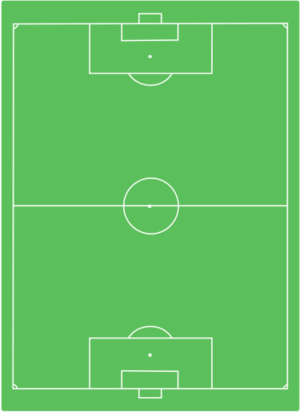Club Atlético Vélez Sársfield
| Full name | Club Atlético Vélez Sársfield | |||
|---|---|---|---|---|
| Nickname(s) | El Fortín (The Fort) | |||
| Founded | January 1, 1910 | |||
| Ground | Estadio José Amalfitani (Capacity: 49,540) |
|||
| Chairman | ||||
| Manager | ||||
| League | Primera División | |||
| Clausura 2010 | 9th | |||
|
||||
Club Atlético Vélez Sársfield[1], usually called Vélez Sársfield or Vélez Sarsfield, is an Argentine sports club best known for its football team, based in the Liniers neighborhood of western Buenos Aires. The club is also frequently referred to as The Fort. Its home stadium is the Estadio Jose Amalfitani, in the borough of Liniers. Vélez have won the Primera División Argentina 7 times and have also won 5 international cups.
Vélez was founded in 1910 in the Floresta neighborhood, next to the Ferrocarril del Oeste railroad station Vélez Sarsfield, named after the 1869 drafter of the Argentine Civil Code Dalmacio Vélez Sarsfield (since 1944 the station has been renamed Floresta). The club first participated in the amateur first division league in 1919 (runners-up), and has been a professional first division fixture since the advent of professionalism in 1931. Relegated only once, in 1941, it returned to the first division in 1943. The club clinched their first professional title in the year 1968, after beating River Plate and Racing.
After that title, the club spent 25 years without silverware until 1993 when the won the Clausura Tournament. The nineties were the most successful period in Velez's history as they won many domestic and international titles. The summit of this came in the 1994 Copa Libertadores when they defeated the São Paulo. Vélez Sársfield is one of eight teams to have won CONMEBOL's treble (the others being Boca Juniors, Olimpia, São Paulo, Independiente, Cruzeiro, Internacional and LDU Quito). Velez has also won the Intercontinental Cup.
Vélez clinched their last Argentine title in the year 2009 when they won the Clausura tournament.
Contents |
History
Vélez foundation dates back to 1910. It was on a rainy January 1 when three men sheltered from a summer storm in Vélez Sársfield Railway Station (nowadays Floresta station), from the Buenos Aires Western Railway. The three men were Julio Guglielmone, Martín Portillo and Nicolás Martín Moreno. They decided to create a new football club to join a local league. After the storm subsided, the three headed for Martín Moreno's house, a stone's throw from the railway station, the last call of the Buenos Aires Western Railway, which connected downtown with the 'far west'.
Together, the friends established the Club Atlético Argentinos de Vélez Sársfield (Argentines of Vélez Sarsfield Athletic Club) and appointed Luis Barredo as their first chairman. Their first home was the piece of land located in between the streets of Provincias Unidas (currently Juan Bautista Alberdi), Convención (currently José Bonifacio), Ensenada and Mariano Acosta. During its infancy, the team sported white shirts but soon changed to navy blue shirts with white shorts.
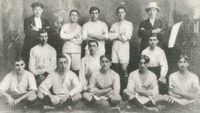
In late 1912 the board decided to rent a new field, located in the neighbourhood of Mataderos, at Tapalque St., between Escalada and Chascomús St. A wind mill provided water for the dressing rooms. Subsequently, the club established their field in the Villa Luro neighbourhood, between the streets Víctor Hugo, Bacacay and Cortina, and next to the Maldonado stream.
In 1913 the club's name was shortened, eliminating the term Argentinos. On May 14, 1914, owing to the great amount of Italian immigrants who were members of the club, the kit was changed again. The new colours adopted were green, red and white, the colours of the Italian flag. From then on the club played in green, red and white stripes.
During the Amateur Era in Argentine football, the club affiliated to different associations. It started playing in the Argentine Primera División in 1919, when the Asociación Amateurs de Football was created. Vélez played its first game against Independiente, winning 2-1 with two goals scored by Martín Salvarredi. On its first season Vélez was runner-up, behind seven times consecutive champion Racing. With 13 games played, Vélez won 9, draw 2 and lost 2; scoring 21 goals and conceding 8.[2]
|
Lineup:
|
|
Rest of the squad: Salvador Carreras, José Castro, José Devoto, Juan Fontana, José Forrester.
In 1920 Salvador Carreras was the first player of the club to become topscorer in the Argentine league. In 1921 the Argentina national football team selected the first Vélez player, José Luis Boffi, who made his debut against Chile in Valparaiso, a game which Argentina won 4-1.
In March 13, 1923, José Amalfitani took on the position of president of the club. Subsequently, the club bought a field in Villa Luro (between the streets Basualdo, Schmidel, Pizarro and Guardia Nacional) to build its stadium. Finally, in November of 1923 the main wood stand was finished, and in March 16, 1924 it was officially opened in a 2-2 draw with River Plate. Four years later, in 1928, Vélez Sársfield's stadium hosted the first night game in Argentine football history. This stadium would come to be nicknamed El Fortín (The Small Fort) by the press and is still often referred to that way. The nickname is also used in reference to the club.
Added to this, Vélez was the first Argentine football team to have a manager. The job was held by Luis Martín Castellano (a physical education teacher) from 1928 to 1936. In between 1930 and 1931 Vélez made a pan-american tour playing against teams from Chile, Peru, Cuba, Mexico and the United States. The team played 25 games, winning 20, drawing 4 and losing 1. It scored 84 times and conceded 32 goals.[3]
In the 1930, Vélez managed to be a powerful force playing at home but struggled away from El Fortín. In 1938 the kit changed to its present colors when a sports-equipment merchant offered the club white jerseys with a blue V on the chest at a discount because a rugby club had not claimed them. The new design has remained unchanged to the present day, forgetting the red, white and green shirt used in the first years of the club.
Vélez clinched their first national championship on the 1968 Nacional. Vélez would have played their first international tournamente in the Copa Libertadores 1969, however they refused to play for economic reasons.
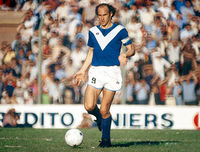
The 1990s was undoubtedly the most successful era in Vélez's history. In the space of a few years, they clinched most of their silverware, having won 9 titles, both domestic and international. Many consider their successes was largely down to coach Carlos Bianchi. As a player he had been part of the Vélez team that obtained its first title in 1968, and Bianchi was Argentine Top scorer in 1970, 1971, and then again during his second tenure in 1981. As team coach, Bianchi drove Vélez to three titles (Clausura 1993, Apertura 1995, Clausura 1996) the 1994 Copa Libertadores, Copa Intercontinental 1994 and Supercopa Sudamericana 1996. Their most notable success to date came in 1994, when Vélez clinched the Copa Intercontinental defeating AC Milan by 2-0. Roberto Trotta (PK) and Omar Asad scored for Vélez. The Paraguayan goalkeeper José Luis Chilavert was the symbol of Vélez throughout those successful years.
During the 2000s Vélez won the 2005 Clausura and the 2009 Clausura.
During the 2009–10 season Vélez Sársfield contributed with 8 players to the different South American national teams: 6 for Argentina (Emiliano Papa, Nicolás Otamendi, Sebastián Domínguez, Jonathan Cristaldo, Gastón Díaz and Franco Razzotti), one for Chile (Waldo Ponce) and one for Uruguay (Hernán Rodrigo López).
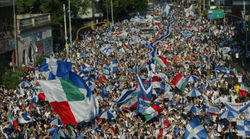
On January 1, 2010 the club's fans celebrated Vélez' 100th anniversary by marching from Floresta to the José Amalfitani stadium in Liniers. A group of around 60,000 people took part of the celebration.[4][5]
Support
Velez is one of the most popular teams in Argentina according to the last census. Their fans are usually known as 'Los Fortineros'.
Velez's fanbase is drawn from the west of Buenos Aires and the surroundings of Liniers, although Fortineros can be found in Moreno and Merlo as well.
Rivals
Vélez Sársfield has no direct rival. Ferrocarril Oeste, based in the neighbourhood of Caballito, is sometimes said to be Velez's historical rival. However, this rivalry has faded out mainly because the teams play in different divisions. They have not faced each other since 2000, when Velez beat Ferrocarril Oeste away 1-0.
Stadium
The José Amalfitani stadium (named after the club's president for over 30 years) holds 49,747 people, although it doesn't provide seating for all of them. It is also frequently used for concerts and Argentina rugby team matches. The stadium, often referred to as El Fortín, was built in 1947 and later remodeled in preparation for the 1978 FIFA World Cup.
The stadium is located on 9200 Juan B. Justo avenue, in the Liniers neighborhood, a short walk from the Liniers train station.
Titles
Amateur era
- Primera División (Asociación Amateurs de Football)
- Runners-up (1): 1919
- Tercera División
- Winners (2): 1914, 1922[6]
- Campeonato Intermedia
- Winners (1): 1926
- Copa Competencia Intermedia
- Winners (2): 1926, 1927
Professional era
Domestic
- Primera División Argentina
- Winners (7): Nacional 1968, Clausura 1993, Apertura 1995, Clausura 1996, Clausura 1998, Clausura 2005, Clausura 2009
- Runners-up (7): Primera División 1953, Metropolitano 1971, Metropolitano 1979, Nacional 1985, Clausura 1992, Apertura 1993, Apertura 2004
- Segunda División Argentina
- Winners (1): 1943
International
- Copa Libertadores
- Winners (1): 1994
- Intercontinental Cup
- Winners (1): 1994
- Supercopa Sudamericana
- Winners (1): 1996
- Recopa Sudamericana
- Winners (1): 1997
- Runners-up (1): 1995
- Copa Interamericana
- Winners (1): 1994
Records
Players in bold are still active with the club.
Most appearances
| Nº | Player | Nationality | Appearances |
|---|---|---|---|
| 1 | Pedro Larraquy | 455 | |
| 2 | Ángel Allegri | 384 | |
| 3 | Fabián Cubero | 364 | |
| 4 | Raúl Cardozo | 353 | |
| 5 | Carlos Bianchi | 324 | |
| 6 | Luis Gallo | 317 | |
| 7 | Armando Ovide | 310 | |
| 8 | Juan Carlos Bujedo | 288 | |
| 9 | Mario Lucca | 281 | |
| 10 | José Luis Chilavert | 270 | |
| 11 | Christian Bassedas | 267 |
Top Goalscorers
| Nº | Player | Nationality | Goals |
|---|---|---|---|
| 1 | Carlos Bianchi | 206 | |
| 2 | Juan José Ferraro | 111 | |
| 3 | Norberto Conde | 108 | |
| 4 | Agustín Cosso | 95 | |
| 5 | Pedro Larraquy | 82 | |
| 6 | Juan Carlos Carone | 76 | |
| 7 | Miguel Ángel Benito | 74 | |
| 8 | Patricio Camps | 70 | |
| 9 | Daniel Willington | 65 | |
| 10 | Omar Pedro Roldán | 60 | |
| 11 | Omar Whebe | 56 |
Top scorers in a League
- Agustín Cosso: 1935
- Norberto Conde: 1954
- Juan Carlos Carone: 1965
- Omar Wehbe: Nacional 1968
- Carlos Bianchi: Nacional 1970, Metropolitano 1971, Nacional 1981
- Jorge Comas: Nacional 1985
- Esteban González: Campeonato 1990-91
- José Oscar Flores: Torneo Clausura 1995
- Rolando Zárate: Torneo Clausura 2004
- Mauro Zárate: Torneo Apertura 2006
Chairmen
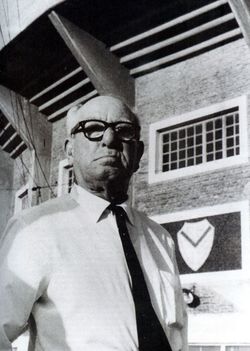
- 1910-1913: Luis Barredo
- 1913-1914: Plácido Marín
- 1914: Roberto Piano
- 1914-1917: Eduardo Ferro
- 1917-1919: Antonio Marín Moreno
- 1919: Eduardo Ferro
- 1920-1921: Antonio Marín Moreno
- 1921-1923: Esteban Aversano
- 1923-1925: José Amalfitani
- 1925-1932: Enrique D'Elías
- 1932-1935: Nicolás Marín Moreno
- 1936-1937: Juan C. Sustaita
- 1937: Narciso Barrio
- 1938-1939: Nicolás Marín Moreno
- 1937-1938: Inocencio Bienati
- 1940-1941: Roberto L. Orstein
- 1941-1969: José Amalfitani
- 1969: Leonardo Pareja
- 1969-1970: Domingo M. Trimarco
- 1970-1976: José R. Feijóo
- 1976: Domingo M. Trimarco
- 1976-1979: Osvaldo Guerrero
- 1979-1985: Ricardo Petracca
- 1985-1991: Francisco Antonio Pérez
- 1991-1993: Ricardo Petracca
- 1993-1996: Héctor Gaudio
- 1996-1999: Raúl Gámez
- 1999-2002: Carlos E. Mousseaud
- 2002-2005: Raúl Gámez
- 2005-2008: Álvaro Balestrini
- 2008- : Fernando Raffaini
Players
Current squad
Current squad for Club Atlético Vélez Sársfield as of September 26, 2010 ()
Sources: Official website and Argentine Soccer
|
|
Manager: Ricardo Gareca
Notable players
- To appear in this section a player must have either:
- Played at least 100 games for the club.
- Set a club record or won an individual award while at the club.
- Played at least 20 international games for their national team at any time.
- Been part of a FIFA World Cup squad at any time.
1930s - 1980s
|
|
1980s - 1990s
|
|
1990s - 2000s
|
|
2000s - 2010s
|
|
Other sports
Vélez has both men's and women's volleyball teams in Argentina's first division. It also competes in basketball, field hockey, and other disciplines.
References
- ↑ http://www.velezsarsfield.com.ar/club/datos/
- ↑ Fútbol argentino década de 1910 at rsssf
- ↑ La Historia de Vélez Sarsfield: (1910-1980). Comisión de Asuntos Históricos, p. 82-93, Buenos Aires, 1980.
- ↑ "Diario Crónica: Más de 50.000 hinchas" (in Spanish). 2010-01-02. http://commons.wikimedia.org/wiki/File:Cronica.jpg. Retrieved 2010-01-02.
- ↑ "Simplemente Gracias" (in Spanish). Vélez Sarsfield official website. 2010-01-05. http://www.velezsarsfield.com.ar/socios/notas/2010/01/05/231514.html. Retrieved 2010-01-14.
- ↑ rsssf
External links
- (Spanish) Official Site
- (Spanish) VelezSarsfield.NET
- (Spanish) La V Azulada
|
|||||||||||||||||
|
||||||||||||||||||||||||||
